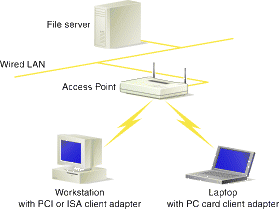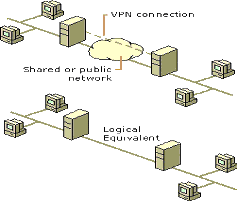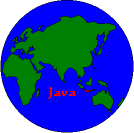NewsLetter Extracts
The following are selected extracts from recent CIOPS newsletters featuring E-business Planning, Virtual Private Networks, the release of the Office 2000 suite and 'Java' the new universal software language:
E-business / E-commerce ?
Will the rewards of selling your products or promoting your business via the Internet justify the costs ?
Before your company plunges into e-business…
...call the professionals at CIOPS.
There are five steps to planning, developing and implementing any successful e-commerce project.
1) Knowledge Management Assessment (KMA)
You need to assess how to survive in the world of e-commerce. This involves assessing how your company utilises information technology, and appraising opportunities to exploit technologies to gain further competitive advantage.
2) Plan
Learn about your needs. Make sure you have a clear picture of what your company expects to gain from an e-commerce solution. Develop long-term and short-term goals for the site.
3) Develop
- Build your database and Web site
- Save development time with prebuilt components
- Enhance and expand your Web site
4) Test and Deploy
Test your site before you move to the live server. Assess user behaviour and site capacity. Plan for growth. Expect the best; Plan for the worst:
- Reliability plan
- Security plan
- Backup plan
- Analysis plan to track performance and site usage.
- Log-handling plan
- Contingency plan for unexpected failures
5) Manage
- Update content
- Measure and analyse; measure actual site use against predictions made during Test phase, and analyse usage data. Be prepared to make changes.
Wireless Networking or Wireless LAN's
Have you ever wished that all those cables connected to your computer would disappear? Ever wanted to be able to access your network from any location in your office? Well what was once a pipe dream is now an affordable reality with a range of products released onto the Australian market in the last month. New technology now allows computer users to access their networks, without cables, at speeds of up to 11 Megabits per second, at ranges up to and beyond 100 meters.
To give you an example of what this technology is capable of, it would be possible for you to sit in your office and work, then pick up your laptop, move throughout your office or factory, remaining connected to the network, and even move outside to continue working there. This can be achieved with network speeds fast enough to support streaming video and sound.
Wireless networking can be achieved at prices comparable with existing network technologies, and can be used to expand current hardwired networks. What's more, by eliminating the cost of cabling, and including the benefits of flexibility and time to set up an operational network, this becomes a very attractive option.
At CIOPS, we feel that Wireless networking will become an important aspect of networking in the future, and are investing considerable time so that we can deliver a professional service in this area to our customers. If you have any questions about wireless technology and how it could improve your business, please contact us for more details.
Virtual Private Networks
A virtual private network (VPN) is the extension of a private network that encompasses links across shared or public networks like the Internet. A VPN enables you to send data between two computers across a shared or public internetwork in a manner that emulates the properties of a point-to-point private link. The act of configuring and creating a VPN is known as virtual private networking.
To emulate a point-to-point link, data is encapsulated, or wrapped with a header that provides routing information allowing it to traverse the shared or public internetwork to reach its endpoint. To emulate a private link, the data being sent is encrypted for confidentiality. Packets that are intercepted on the shared or public network are indecipherable without the encryption keys. The link in which the private data is encapsulated and encrypted is known as a virtual private network (VPN) connection.
VPN connections allow users working at home or on the road to obtain a remote access connection to an organization server using the infrastructure provided by a public internetwork such as the Internet. From the user's perspective, the VPN is a point-to-point connection between the computer, the VPN client, and an organization server, the VPN server. The exact infrastructure of the shared or public network is irrelevant because it appears logically as if the data is sent over a dedicated private link.
VPN connections also allow organizations to have routed connections with geographically separate offices or with other organizations over a public internetwork such as the Internet while maintaining secure communications. A routed VPN connection across the Internet logically operates as a dedicated wide area network (WAN) link.
With both the remote access connection and the routed connection, VPN connections allow an organization to trade in long distance dial-up or leased lines for local dial-up or leased lines to an Internet service provider (ISP).
Time for Office 2000 Already ?
Doesn’t it seem just like yesterday that we got to see Office 97 for the first time? It was January 1997, actually. In Microsoft's eyes, at least, it is time for an upgrade.
Microsoft has released its beta version of Office 2000, and the full version is set to be released on the market early this year.
Communication and collaboration are the hallmarks of Office 2000. The big news of Office 2000 has to do with the Web. With its new Web-based capabilities, Office 2000 streamlines how people work together and share information.
Here are just some of the new features we can look forward to:
Office 2000 includes an interface that learns your habits and adjusts accordingly. The main menu installs with short drop-down option lists that you are most likely to use.
You can conveniently display the Help system on the right side of the screen, so you can follow along with the directions as you work on your document.
Office 2000 can also "heal" itself. For example, if you launch Word and a needed file (such as DLL) is missing, you’ll be prompted for the original source (such as a CD) and the program will install the missing files and let you get back to work.
Office 2000 unlike Office 97 will be compatible with previous Office file formats.
The programs Word, Excel, PowerPoint, Access and Outlook have several add on features. Word and PowerPoint stand out as the ones with the most changes.
WHY TAKE THE ROAD JAVA?
Java, the place is one of 13,000 islands that make up Indonesia.
Java, not the place, is a product of Sun Microsystems.
Java technology is based on the notion that ideally the same software should run not only on many different kinds of computers but all kinds of electronic equipment.
The various computing platforms available today, eg IBM compatible PC, MAC or UNIX each require different versions of software in order to perform their various functions.
Java technology developed from the simple idea that manufacturing problems would be minimised and consumers could benefit from electronic products talking to each other, sharing objects and understanding all the others' behaviour.
Of course it soon became apparent that traditional computer programming languages were inadequate so the designers set out to develop something new, modern, and simple.
So Java was born.
It didn't take long to realise that Java had potential far beyond anything the design engineers initially thought. At first Java was used to enliven Web pages but then was embraced by developers and users because it was uniquely able to be used for building and running applications not only across any network but also any operating system.
HOW DOES JAVA TECHNOLOGY WORK?
Java software can be delivered over a network or installed on computers from traditional media such as CD-ROMs. The same program or software component can run on a variety of computers and devices.
Java programs are able to run on different computer systems thanks to a platform component called the Java Virtual Machine - a kind of translator that turns general Java platform instructions into tailored commands understood by the host computer.
Java applications, called applets, differ from ordinary applications in that they reside on the network in centralised servers. Only when you request them are applets delivered to your system.
If you access the Internet from your home or office you've probably already got the Java platform since it's incorporated into all major Web browsers.
And just as you can use the Internet to access information from anywhere in the world so businesses can now employ the same technology to put the corporate knowledge base to work.
WHY ARE JAVA BASED SOLUTIONS THE ANSWER?
There are 5 compelling reasons:
No client installation costs. All that is needed is a Web browser installed on the client. No further set up is needed.
Secure communication between client and server. Data encryption means that documents and transactions can be safely transmitted between the client and the server.
Low memory requirements. The Java applet may be less than 200Kb.
Low network traffic. Raw data is processed at the server and only sends the results, not the raw data to the client software, thus reducing network traffic.
All a user needs is a Java compatible browser and limited access to the server. Once the user enters the URL, the browser automatically downloads the Internet client, in the form of a Java applet, to the user's machine. So whether you're working from a remote office, or are travelling or on holidays, you will still have access to all your important information as if you were sitting next to your company's main file server.
From the business point-of-view, Java simplifies the deployment of applications thus saving money. Java applications can be deployed with out modification to any computing platform. And because the applications are stored on centralised servers, there is no longer a need to have people insert disks or send CD's to update hardware. A branch office that is very small nad can't justify a full server can now just run a Java client.
For up-to-date information on business-related topics request a copy of the latest edition of the CIOPS newsletter, "Synchronicity".
Web Changes
This is where we'll announce the significant additions to our web site. If you've visited us before and want to know what's changed, take a look here first.
Introduction of e-solutions such as PD Accord - business-to-business collaboration software, 30th June 2000.
New pages introducing the TimeTracker II time-logging unit and the CIOPS Knowledge Management Assessment service on 1st January 2000.
'Free Customer Subscription List' options added to this web page (see below) on 15th March 1999.
- 'Interesting Web Sites' added to InterLinks Page on 23rd December 1998
- see the CIOPS Links page for more details.
Press Releases
The following press articles may be of interest. You may want to search for topics referenced at this web site by keyword.
August 5th, 1998 -- Press Release 1 (PeopleDoc).
June 26th, 2000 -- Press Release 2 (PD Accord).
Media Coverage
"The smart art of getting your clients on-line and on side", The Courier Mail, April 12th, 1997
"Be A Well Documented Success", Directions - Australian Institute of Company Directors, March 1998 (EasiFile)
"Bringing Management Power To The People", The Scotsman, September 9th, 1998 (PeopleDoc).
Free Customer Subscription List
Please select one of the following options to receive free email updates for the information indicated:





